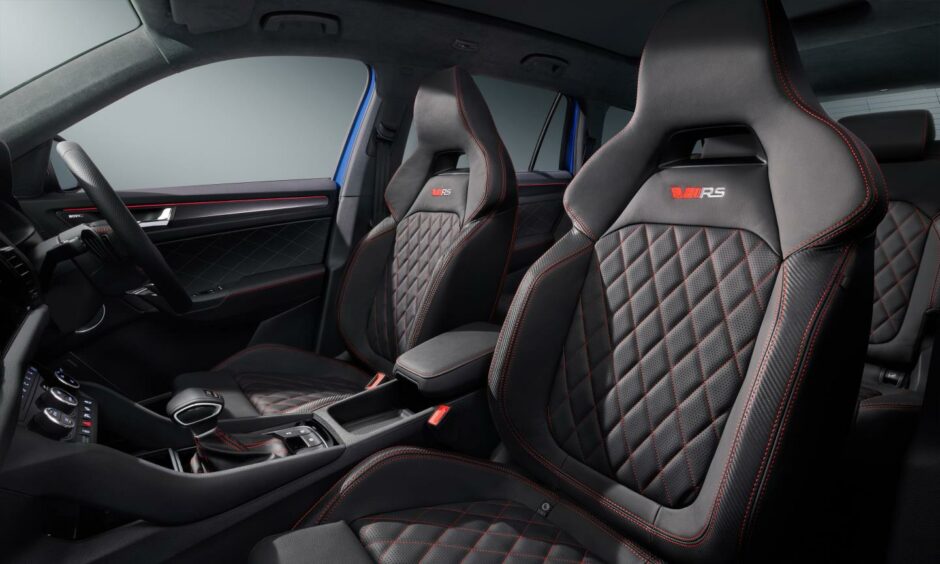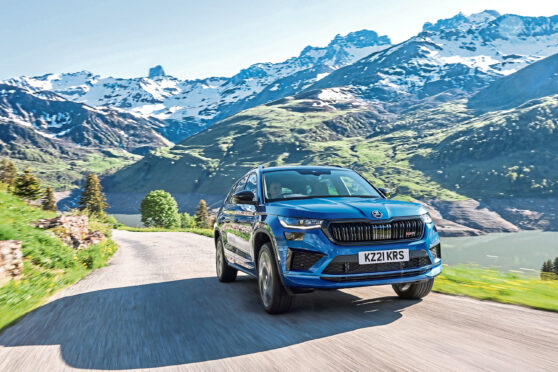When you see the name ‘vRS’ next to a Skoda you know it’s likely to go some.
It’s the badge Skoda’s hot hatchbacks, saloons and estate cars get.
Invariably they come with bodykits, mean alloys, uprated suspension and fire-breathing engines.
Now we have a hot-SUV. The Kodiaq vRS is based on Skoda’s largest model.
Previous generations of the Kodaiq vRS used a twin-turbo diesel engine. The 2021 model replaces that with a 2.0 litre turbocharged petrol engine pumping out 242bhp.
That’s enough to get it from 0-62mph in a very brisk (especially for such a big car) 6.6 seconds.
Adaptive dampers, bigger wheels with wider tyres, and re-worked steering are all designed to make the car handle better.
It works…to an extent. I drove the Kodiaq vRS on some backroads to the south of Edinburgh.

It is ferocious in a straight line. And handling is not too bad for such a big beast. It never feels nimble, though, and in tight corners it wallows a bit.
It’s not nearly as agile as other – admittedly much smaller – hot SUVs such as the Ford Puma ST and the Cupra Ateca.
Plenty to like
The Kodiaq is one of my favourite large SUVs with good reason though. It’s a good looking beast. It’s comfortable and great for long distances. You sit nice and high up. It’s good value for money. And, like most Skodas, it has an incredible amount of interior space.
There’s loads of room for five, and seven seat versions have decent leg room in the rearmost seats. The boot is gargantuan. There are cubbyholes and stowage spaces everyhere. And it’s good value for money, with prices starting at a little over £25,000.
The Kodiaq vRS costs a fair whack more, with a price tag north of 43,000.
That still represents value compared to other souped up SUVs, however, and it is very well equipped.
The interior is excellent, with lots of soft-touch materials and easy-to-use dials.
I still think the Kodiaq is a fantastic car. I’m just not sure it needed a sports version. This is a car that suits a diesel engine, or a hybrid if you’re being green. It’s designed to take the family and dog on long distances in comfort. It’s not really meant to be snapped round a series of bends.
If it were my money I’d save some cash and go for one of the brilliant entry level models.
